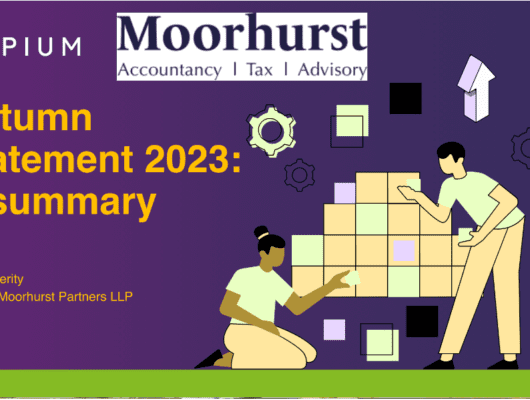[fusion_builder_container type=”flex” hundred_percent=”no” hundred_percent_height=”no” min_height=”” hundred_percent_height_scroll=”no” align_content=”stretch” flex_align_items=”flex-start” flex_justify_content=”flex-start” flex_column_spacing=”” hundred_percent_height_center_content=”yes” equal_height_columns=”no” container_tag=”div” menu_anchor=”” hide_on_mobile=”small-visibility,medium-visibility,large-visibility” status=”published” publish_date=”” class=”” id=”” link_color=”” link_hover_color=”” border_sizes=”” border_sizes_top=”” border_sizes_right=”” border_sizes_bottom=”” border_sizes_left=”” border_color=”” border_style=”solid” spacing_medium=”” margin_top_medium=”” margin_bottom_medium=”” spacing_small=”” margin_top_small=”” margin_bottom_small=”” margin_top=”” margin_bottom=”” padding_dimensions_medium=”” padding_top_medium=”” padding_right_medium=”” padding_bottom_medium=”” padding_left_medium=”” padding_dimensions_small=”” padding_top_small=”” padding_right_small=”” padding_bottom_small=”” padding_left_small=”” padding_top=”” padding_right=”” padding_bottom=”” padding_left=”” box_shadow=”no” box_shadow_vertical=”” box_shadow_horizontal=”” box_shadow_blur=”0″ box_shadow_spread=”0″ box_shadow_color=”” box_shadow_style=”” z_index=”” overflow=”” gradient_start_color=”” gradient_end_color=”” gradient_start_position=”0″ gradient_end_position=”100″ gradient_type=”linear” radial_direction=”center center” linear_angle=”180″ background_color=”” background_image=”” background_position=”center center” background_repeat=”no-repeat” fade=”no” background_parallax=”none” enable_mobile=”no” parallax_speed=”0.3″ background_blend_mode=”none” video_mp4=”” video_webm=”” video_ogv=”” video_url=”” video_aspect_ratio=”16:9″ video_loop=”yes” video_mute=”yes” video_preview_image=”” absolute=”off” absolute_devices=”small,medium,large” sticky=”off” sticky_devices=”small-visibility,medium-visibility,large-visibility” sticky_background_color=”” sticky_height=”” sticky_offset=”” sticky_transition_offset=”0″ scroll_offset=”0″ animation_type=”” animation_direction=”left” animation_speed=”0.3″ animation_offset=”” filter_hue=”0″ filter_saturation=”100″ filter_brightness=”100″ filter_contrast=”100″ filter_invert=”0″ filter_sepia=”0″ filter_opacity=”100″ filter_blur=”0″ filter_hue_hover=”0″ filter_saturation_hover=”100″ filter_brightness_hover=”100″ filter_contrast_hover=”100″ filter_invert_hover=”0″ filter_sepia_hover=”0″ filter_opacity_hover=”100″ filter_blur_hover=”0″][fusion_builder_row][fusion_builder_column type=”1_1″ align_self=”auto” content_layout=”column” align_content=”flex-start” content_wrap=”wrap” spacing=”” center_content=”no” link=”” target=”_self” min_height=”” hide_on_mobile=”small-visibility,medium-visibility,large-visibility” sticky_display=”normal,sticky” class=”” id=”” type_medium=”” type_small=”” type=”1_1″ order_medium=”0″ order_small=”0″ dimension_spacing_medium=”” dimension_spacing_small=”” dimension_spacing=”” dimension_margin_medium=”” dimension_margin_small=”” margin_top=”” margin_bottom=”” padding_medium=”” padding_small=”” padding_top=”” padding_right=”” padding_bottom=”” padding_left=”” hover_type=”none” border_sizes=”” border_color=”” border_style=”solid” border_radius=”” box_shadow=”no” dimension_box_shadow=”” box_shadow_blur=”0″ box_shadow_spread=”0″ box_shadow_color=”” box_shadow_style=”” background_type=”single” gradient_start_color=”” gradient_end_color=”” gradient_start_position=”0″ gradient_end_position=”100″ gradient_type=”linear” radial_direction=”center center” linear_angle=”180″ background_color=”” background_image=”” background_image_id=”” background_position=”left top” background_repeat=”no-repeat” background_blend_mode=”none” animation_type=”” animation_direction=”left” animation_speed=”0.3″ animation_offset=”” filter_type=”regular” filter_hue=”0″ filter_saturation=”100″ filter_brightness=”100″ filter_contrast=”100″ filter_invert=”0″ filter_sepia=”0″ filter_opacity=”100″ filter_blur=”0″ filter_hue_hover=”0″ filter_saturation_hover=”100″ filter_brightness_hover=”100″ filter_contrast_hover=”100″ filter_invert_hover=”0″ filter_sepia_hover=”0″ filter_opacity_hover=”100″ filter_blur_hover=”0″ last=”no” border_position=”all”][fusion_text columns=”” column_min_width=”” column_spacing=”” rule_style=”default” rule_size=”” rule_color=”” content_alignment_medium=”” content_alignment_small=”” content_alignment=”” hide_on_mobile=”small-visibility,medium-visibility,large-visibility” sticky_display=”normal,sticky” class=”” id=”” font_size=”” fusion_font_family_text_font=”” fusion_font_variant_text_font=”” line_height=”” letter_spacing=”” text_color=”” animation_type=”” animation_direction=”left” animation_speed=”0.3″ animation_offset=””]
(What it means for them in real life)
In recent conversations with clients, there seems to be a high level of uncertainty relating to the impact of Making Tax Digital (MTD) on their firms. One thing that everyone is unanimous about is that tax is changing. HMRC’s intention with Making Tax Digital is to allow them to be able to interact digitally with all tax payers by 2020.
Full details of David Gauke’s announcement can be found here
The concept of MTD has been around for years. At top level the idea seems to be welcomed by the industry. The idea of taxpayers having instant access to their data, improved communication lines with HMRC and making payments online seems like the ultimate solution. Digging deeper however, many feel the new system will be the biggest challenge faced within the tax industry, which ultimately will impact not only every taxpayer and business, but agents too.
So what does MTD consist of?


The Digital Tax Account (DTA)
Every taxpayer and business in the UK will be provided with a Digital Tax Account. Individual taxpayers have a Personal Tax Account ; whilst every business will have a Business Tax Account, for handling business affairs related to VAT, PAYE, Corporation Tax, Partnership Tax, amongst others.


The Data Feed
The aim of the DTA will be to feed real time data into the account through the use of 3rd party software. An example of this would be HMRC’s use of introducing RTI filing for payroll. Payroll software will feed information related to a pay run directly into a DTA account. In fact it also feeds directly into the Personal Tax Account associated to that employment. Taking the same concept, HMRC’s intention is now for you to provide all other information to feed directly into the accounts; with the aim of providing a taxpayer a full overview of any income (rental income, self employment income, bank interests, any dividends gained); within a real-time environment.
The resulting factor of this? The tax return form will be replaced with a digital tax account. The main difference being that HMRC will carry out the assessment of the tax to be paid based on the information supplied into the account.


The introduction of at least Quarterly Updates
As of April 2018, HMRC intend for the majority of sole traders and landlords (including those in employment but also have a secondary source of £10,000 or more per annum) to keep records in some form of digital format and submit the high level information online – at the very least on a quarterly basis. Following this timeframe, it will be rolled out to SME businesses by 2020 with intentions of reporting VAT and corporation tax obligations.
The objective being that HMRC no longer feels spreadsheets to be an adequate form of record keeping. By introducing this as mandatory, they feel it will make paying taxes and reporting information closer to real-time.


Tax liability calculations
Based on all the information fed through as close to real-time as possible, HMRC’s system will calculate your potential tax liability. The issue being, there could be a high chance of the calculations being incorrect without any adjustments being carried out by a professional.
Access
Currently HMRC have stated that the “Your Tax Account for Business” (YTA) will not be available for tax agents to use. Although it provides businesses with ways to find advice and information and lets them view tax transactions across the range of business taxes including Self Assessment (SA), Corporation Tax (CT), VAT and PAYE for employers; it’s not accessible by agents.
Instead agents will need use a separate system named “Agent Online Self-serve” (AOSS) however currently is only available to agents with less than 200 clients during the pilot phase. Although HMRC acknowledge the need to roll this out to all agents, there is still not a definitive date in place with indications pointing towards some point between July and December 2016.
What does this mean for firms and their clients?
At the moment there seems a great deal of uncertainty over what impact this will have operationally as well as financially to firms. Below we highlight some current pain points which need to be considered and potentially some remedies to them.


The dependency
With MTD now gaining momentum and the introduction of Quarterly Updates; the likelihood that clients will need their accountant more than ever before, seems very high. The administrative responsibility forced upon small businesses by continuously feeding information into their digital account may seem easy at first glance to even the most accounting and tech savvy business person; however the likelihood of needing to
carry out certain accounting adjustments seems to be almost certain. With the tax system becoming even more complexed, somebody will need to ensure the calculations and adjustments carried out are correct from the outset.
The result of this? Clients will become more dependent on their accountant to safeguard this measure. Many firms however, are concerned the introduction of MTD could place too much of an operational drain not only on businesses and individuals, but subsequently impacting their agents too.


The cost
In the past years, many firms may have had clients where they worked on their account once or twice in a year. The work will now change to become of a much more regular occurrence; at the very least on a quarterly basis. The principle of real-time updates sounds fantastic to all; however does this culminate in firms now being forced to charge more to their client, due to more time being spent on their account? The adjustments a firm
may have carried out on a yearly basis, now becomes more frequent-at least quarterly/monthly to ensure the data sent across is accurate. All this culminates in more time spent.


Client numbers
There is a fear that this extra burden on businesses goes against advocating the start-up boom we have seen in the UK over the past few years. The risk of introducing MTD could place too much pressure on ensuring businesses focussing on their accounting requirements being correct, instead of the focus remaining on growing their business. Some accounting firms are worried that many business owners may choose to return to being employed rather than being an employer, resulting in less business for a firm. Having said this many firms also feel that it is a matter of advising and training their clients on the best processes and tools available, though it could be painful in the initial stages. Is this an opportunity to offer advisory services and illustrate the value you can provide business owners?
The Technology
The vision of MTD having any chance of working is primarily driven around the use of technology. In a recent survey carried out, many firms feel that the adoption of technology software can be used to streamline and automate a great deal of the mundane work that would need to be carried out rgularly. This tech can be offered to clients to ensure regular activity is maintained. Naturally there will be clients who are less technical than others. Research the options available to cater for their needs.
Some clients can be given more access to carry out accounting work than others. Cost of some doesn’t have to be an issue as some offer free accounting options. Others can be restricted to the bear minimum for recording purposes. The use of receipt capturing and bank feeds may also prove to be of service to carry out the mundane work and maintain control – cost permitting.
Conclusion
Many accountants currently view the impact of MTD with some concern, primarily based around the uncertainty of additional work and costs involved. Are they forced with no alternative but to pass on the costs to their clients?
They do however feel there are elements which will help taxpayers manage their affairs. Those that we have spoken to welcome the digitisation of tax in principle; however request more clarity on the subject, prior to the full rollout taking place and the speed associated with it.
As a software provider we will continue to work closely with our clients and HMRC to ensure you are provided with data in as real-time as possible when more information and access has been shared. We will ensure the data remains fully integrated throughout all of our modules, and remain focused on streamlining the efficiencies within your practice.
“By 2020, businesses and individual taxpayers will be able to register, file, pay and update their information at any time of the day or night, and at any point in the year, to suit them. For the vast majority, there will be no need to fill in an annual tax return.”
“By 2020, taxpayers will be able to see their complete financial picture in their digital account, just like they do in their online banking. And they will be able to set an over-payment of one tax against the under-payment of another: it will feel like paying a single tax.”
Topics: Digital Tax Guide, Making Tax Digital
[/fusion_text][/fusion_builder_column][/fusion_builder_row][/fusion_builder_container]






